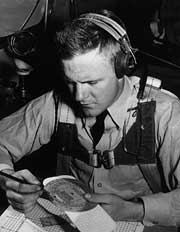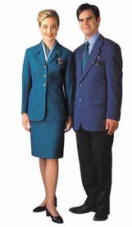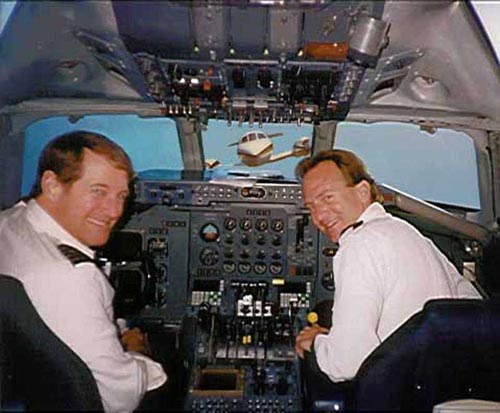
- •Icao Level 3-4
- •L ook through the text and answer the question:
- •Read the text thoroughly. Find information to speak on:
- •Answer the following questions:
- •Answer the following questions given in the table below.
- •Take turns to ask and answer the same questions with your partner. Do you (both) have a lot in common?
- •Listen to the recording and copy Paul’s answers. Do you (all) have a lot in common?
- •Put a tick next to each description which best describes an atc.
- •Watch a video and answer the following questions.
- •Video # 7
- •D escribe a picture and give as many ideas as possible about the event. Justify your opinion. You have 30 seconds to think.
- •Round-table talk.
- •Match the words and phrases to their definitions.
- •Look through the text again and complete the table with key-words to speak about airport security measures and personnel according to the table.
- •Look through the text and choose the suitable heading for each paragraph.
- •Describe this picture and give as many details as possible about the common procedure before flight. Justify your opinion. You have 30 seconds to think.
- •Describe a picture and give as many ideas as possible about the airport security measures. Justify your opinion. You have 30 sec to think.
- •Look at the picture, say what things you can see in the picture and answer the question:
- •Read the text again and answer the following questions.
- •Divide all these things into three columns.
- •Match the words to their definitions.
- •Look at the picture. Label the pictures using the words from the box below.
- •Match the words to their definitions.
- •Complete each sentence with the correct form of the word in capitals. Make all necessary changes.
- •Look through the text and entitle each paragraph.
- •Underline the word with a different meaning.
- •Complete the sentences using the phrases from the box.
- •4. What is the most important information to be passed to the supervisor in case of squawking 7500?
- •5. Choose a partner. Use the prompts from the card to make a pilot-controller communication.
- •Write down the words with a similar meaning given in the box.
- •Complete the table using the dictionary.
- •Complete each sentence with the correct form of the word in capitals. Make all necessary changes.
- •Listen to the communication and mark the statements true or false.
- •R eport on the situation and give as many details as possible about the event.
- •Find and circle all the Weather words that are hidden in the grids. The words may be hidden in any direction.
- •Give equivalents to the following words:
- •What do these abbreviations stand for? What information do they include?
- •Match the words to their definitions:
- •Complete the following sentences using the words from the box.
- •Look through the text and pick out the items of a weather report.
- •Read the text again, look through the following statements and say if they are true or false:
- •Look through the text and answer the following question:
- •Why are wind speed and direction very important for flight?
- •Look at the table and check if you are right.
- •4. Watch a video and guess what we are going to discuss now.
- •Video # 23
- •L ook through the 3 characteristics of a rw and cross the odd out.
- •R ead the text and answer the following questions. You can use your own experience.
- •Describe a picture and give as many ideas as possible about the event. Justify your opinion. You have 30 seconds to think.
- •Do the lightning quiz, choosing the correct answers. Then check your answers with the teacher.
- •5. Describe the pictures and give as many ideas as possible about the event. Justify your opinion. You have 30 seconds to think.
- •Match the words from column a with the words and phrases with similar meaning from column b.
- •Look through the text and enumerate all the aircraft problems which can be caused by bird strikes.
- •R ead the text again and answer the following questions:
- •Listen to the four recordings and report on each one using the following questions as a plan:
- •Make a report on the event using information in the table above.
- •Look through the following information and complete the table below.
- •S peak about consequences of bird strikes, bird attractants and the most reliable methods of scaring birds away from the aerodrome. Use the information in the table above.
- •Describe a picture and give as many ideas as possible about the event. Justify your opinion. You have 30 seconds to think.
- •Fill in the correct prepositions.
- •Listen to the recording of the pilot-controller communication. Make notes and then report about aircraft callsign, problem, pilot’s intentions and controller’s actions.
- •Complete the radio- exchange with sentences from the box. Then listen and check your answers.
- •Do birds cause any problems where you work?
- •Round-table talk.
- •Look at the pictures and identify the type of aircraft and say what you know about it.
- •Listen to the following definitions of aircraft main parts and guess what they are.
- •Listen and check your answers.
- •Match the words in a to the words with the similar meaning in b.
- •Match the words in a to the words in b to make collocations. Different variants are possible.
- •Fill in the gaps with the words from the boxes. Check new words with your teacher or in a dictionary.
- •Look through each part of the text and say what it is about. Entitle each paragraph.
- •Discuss with a partner if the following statements are true or false. If necessary justify your opinion.
- •Match the words in column a to the words with the similar meaning in b.
- •Match the words in a to their definitions in b.
- •Listen to the recording about technical problems that might happen to an aircraft and check your answers.
- •Make a list of technical problems that might happen to an aircraft during the flight.
- •Look through the text and choose a suitable heading for each paragraph from the list below. There is one extra heading which you do not need to use.
- •Video # 33
- •L ook through the text and think of a title. Then read the text and answer the questions.
- •Match the words in column a to their definitions in column b.
- •Have you ever heard about aviation event involving fuel problem?
- •Look through the list of technical problems (Ex. 5 page 114) and check if all problems are mentioned. Then say what your actions might be in case of each technical problem on board the plane.
- •Match the words and phrases in column a to their definitions in column b.
- •Video # 37
- •Speak on the case using the words and phrases given in exercise 5.
- •Describe a picture and give as many ideas as possible about the event. Justify your opinion. You have 30 seconds to think.
- •Match the words in a to their definitions in b.
- •Listen to the report about the crash of Armavia Airbus a320-21.
- •Speak on the influence of human factor in that crash.
- •Match the words to their definitions.
- •Match the words to the words with the similar meaning.
- •Match the words that go together.
- •W atch a video and answer the following questions:
- •Video # 41
- •Elicit the information from the table and speak on flight safety and factors influencing it.
- •Match the words and phrases in column a to the words with the similar meaning in b.
- •Match the words that go together. You can write them into central column.
- •Look at the list of possible reasons for the aviation event. Watch a video and put them into correct order.
- •Video # 42
- •Report on the situation using the following words and phrases:
- •Describe a picture and give as many ideas as possible about the events. Justify your opinion. You have 30 seconds to think.
- •Round-talk table.
- •Tapescript.
GREAT STARTS
MAKE
GREAT FINISHES
Course Book for Aviation Personnel
Icao Level 3-4
2008
INTRODUCTION
![]()
Great Starts Make Great Finishes is an aviation course book for air traffic controllers of ICAO levels 3-4. The established language syllabus is based on aviation topics that learners actually need at that stage in their language development. The Great Starts Make Great Finishes syllabus intergrates the learning of new vocabulary with speaking and listening skills development in delivering aviation English language. The course contents cover the main categories in language skills development and linguistic competence of learners that they need to achieve ICAO Level 4.
The course is designed to provide a series of skills-based challenging tasks that can help learners to measure their progress in terms of language competence according to ICAO testing system requirements. The course contents are fully compatible with ICAO testing system requirements and give learners regular opportunites to get prepared for it and then assessed.
The Great Starts Make Great Finishes course is based on a guided discovery approach to learning: first learners check what they know and realize how much they know, then they are guided to make their passive knowledge active, together with a steady input of new language material. All new language material is regularly recycled and reviewed with a strong focus on speaking and listening throughout the course.
The ultimate aim of most pre-operational learners is to achieve operational level (ICAO Level 4) through the aviation topics presented in course that motivate them to speak, so the key words and phrases necessary for extended speaking are given in fresh and stimulating contexts with numerous opportunites for communicative, personalised speaking practice.
The course consists of Student's Book, Teacher's Book, CD-ROM and DVD-ROM.
The Student's Book provides approximately 150 hours of teaching material for classroom activities, that can be extended with the photocopiable resources in the Teacher's Book. The Student's Book contains the material in the form of tasks for reading, listening, video activities providing and encouraging language skills development and linguistic competence they need to be able to communicate successfully on job-related topics.
The Student's Book provides 10 thematically linked units, each with 2-5 lessons. Each lesson takes approximately 90 minutes depending on a group level competence. A teacher's creative initiative is highly appreciated. The CD-ROM contains all listening material for the Student's Book, including drill recordings, real radio exchange recordings. The DVD contains material for picture description activities and videos. The Teacher's Book includes Teaching Notes for 10 units, teaching tips for each lesson: listening scripts, answers for all the activities in the Student's Book and Photocopiable Materials.
We believe that consolidated efforts of our team can help learners to expand their their knowledge of functional language, i.e. ablity to speak on job-related topics and improve their language competence in terms of ICAO testing system requirements. Krasnoyarsk team would like to thank the people who have contributed to making the course. In particular we would like to thank our co-authors: Marrianna Glagoleva, Elena Isaeva, Evgeniya Kocherova, Alla Nikolaenko for their support and ideas.
Krasnoyarsk team: Elena Glios, Margarita Mamontova, Nadezhda Silantyeva, Veronika Sychevskaya, Olga Fedoseenko.
CONTENTS
![]()
1. THE RIGHT PERSON FOR THE RIGHT JOB. |
1A – 1E |
|
4. WHY ARE YOU AFRAID OF FLYING? |
4A – 4C |
1A. Aviation Jobs, Non-Flying Staff |
p. 6 |
|
4A. Aviation Terrorism, Ways to Prevent Terrorism |
p. 51 |
1B. Cabin Crew |
p. 9 |
|
4B. Aircraft Hijacking |
p. 56 |
1C. Flight Crew |
p. 12 |
|
4C. Pilot's and Controller's Actions in Case of Hijacking |
p. 62 |
1D. Nature of the Controller's Job |
p. 15 |
|
|
|
1E. Air Traffic Controller's Responsibilities |
p. 26 |
|
|
|
|
|
|
5. AFTER RAIN COMES SUNNY DAY. |
5A – 5D |
|
|
5A. Weather in Aviation |
p. 67 |
|
2. SECURITY IS EVRYBODY’S JOB! |
2A – 2B |
|
5B. Wind in Aviation |
p. 72 |
2A. Airport Security Measures |
p. 33 |
|
5C. Visibility, RW Condition, Temperature, Icing |
p. 75 |
2B. Airport Security Measures at Domodedovo Airport |
p. 40 |
|
5D. Lightning Strike |
p. 81 |
|
|
|
|
|
|
|
|
||
3. SOME THINGS WERE NEVER MEANT TO FLY. |
3A – 3B |
|
6. AIRPORT IS NOT A PLACE FOR A WILD LIFE. |
6A - 6B |
3A. New Flying Rules and Regulations, Dangerous Goods |
p. 44 |
|
6A. Bird Hazard |
p. 87 |
3B. Unattended Baggage |
p. 48 |
|
6B. Bird Scaring Methods |
p. 93 |
|
|
|
|
|
7. GREENER. CLEENER. QUIETER. SMARTER. |
7A |
|
9. NO ONE IS PERFECT. |
9A – 9C |
7A. Aircraft Parts and Systems |
p. 101 |
|
9A. Human Factor and its Role in Aviation |
p. 125 |
|
|
|
9B. Armavia Accident |
p. 131 |
|
|
9C. Some Extraordinary Cases |
p. 133 |
|
8. IS YOUR AIRCRAFT CERTIFIED TO FLY? |
8A – 8D |
|
|
|
8A. Aircraft Technical Failures |
p. 112 |
|
|
|
8B. Structural Failure, Decompression |
p. 116 |
|
10. SAFETY CANNOT BE COMPROMISED! |
10A – 10B |
8C. Hydraulic Systems Failure |
p. 120 |
|
10A. Flight Safety Introduction |
p. 136 |
8D. Fuel Problems |
p. 121 |
|
10B. Factors Influencing Safety |
p. 138 |
|
|
|
|
|
|
|
|
||
Listening and Speaking Bank |
|
|
|
p. 142 |




VIDEO # 1
|
Warm up.
|
||||
|
|
|
|||
Write down their place of work where it is necessary. |
Transport Service Agent / Teletechnician / Technician / Supervisor / Security Officer / Search & Rescue Team / Policeman / Personnel Licensing Instructor / Passport Control Officer / Meteorological Officer / Lost & Found Officer / Loadmaster / Handler / Fuel Agent (Fueller) / Fire-fighter / Engineer / Electrician / Customs officer / Construction worker / Check-in attendant / Baggage Handler / Aviation Examiner / ATC manager / Ambulance man / |
|
|||
JOB |
PLACE OF WORK |
DUTIES |
|
|
Airport Terminal |
Carries passengers’ baggage |
|
|
|
Checks passports of the traveling passengers |
|
|
Customs Service |
Checks the goods brought in from other countries |
|
|
|
Checks in passengers’ tickets and baggage |
|
|
Hangar |
Controls the work of the aircraft engines |
|
|
|
Deals with all the damages and malfunctions of an aircraft |
|
|
|
Deals with different types of aerodrome transport |
|
|
|
Deals with electrical equipment of the runway lights |
|
|
Operations Room |
Directs the work of all controllers in a shift |
|
|
|
Does all the maintenance work on the runways |
|
|
Medical Station |
Gives immediate medical help before taking a sick person to the hospital |
|
|
|
Instructs and trains employed controllers/ is responsible for On-the-Job training (OJT) |
|
|
Representative Office |
Is a flight company representative who deals with any problems the crew may be faced with |
|
|
|
Is responsible for aviation workers health |
|
|
|
Is responsible for fueling, refueling and everything concerning fuel |
|
|
Cargo Service |
Is responsible for loading and unloading cargo |
|
|
|
Is responsible for proper work of radars, communication systems, computer support, etc. |
|
|
Meteorological Service |
Is responsible for weather forecast at the aerodrome and en-route |
|
|
|
Keeps things that are lost or forgotten |
|
|
Police Service |
Prevents and solves crimes |
|
|
|
Protects airport facilities and passengers against crime |
|
|
|
Provides life-saving service |
|
|
Fire Station |
Stops fires burning |
|
|
ATC Center |
Watches and checks the job of all controllers in the center |
NB! You can use the tips for giving definitions.
|


VIDEO # 2
|
Warm up.
|
|
Hand
belt
Call
baggage
Disabled
button
Passenger
compartment
Crew
crew
Cabin
exit
Emergency
instructions
Boarding
matter
Seat
member
Safety
pass
Reading
passenger |
|
|
|
T |
The cabin crew members are officially called cabin or flight attendants. They have to perform a wide variety of duties, including those concerning the safety of passengers in all emergencies. There is a senior member of the cabin crew who is responsible to the captain. |
|
Flight attendants are responsible to the senior member of the cabin crew. Before each flight the senior flight attendant is given information about known invalids among the passengers, names of passengers requiring special attention and unaccompanied children.
A
D |
T
|
|
|


VIDEO # 3
|
Warm up.
|
|
|
||||||||||||||||
|




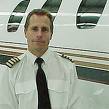






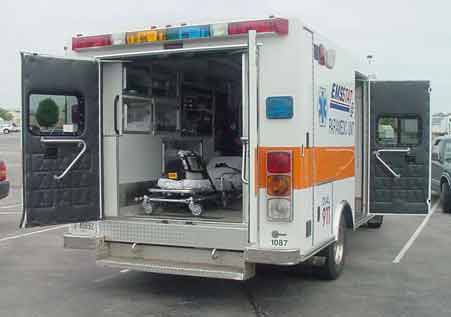


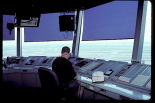
 ake
a card. Describe the job, using the duties and place of work so
that the others can guess the name.
ake
a card. Describe the job, using the duties and place of work so
that the others can guess the name.


 ook
through the text quickly and think of the title.
ook
through the text quickly and think of the title.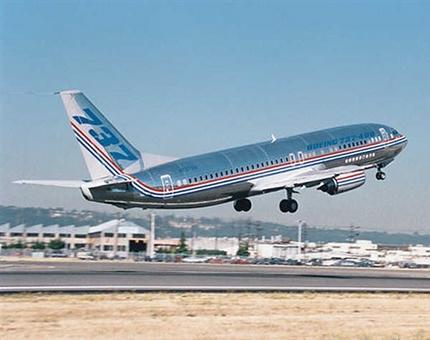 his
is a passenger airliner. There are passenger cabins or
compartments for passengers in it, where the cabin crew work.
his
is a passenger airliner. There are passenger cabins or
compartments for passengers in it, where the cabin crew work.
 s
the passengers come aboard, the cabin crew members greet them,
check their tickets or boarding passes if required, direct them
to their seats, assist them with their coats and hand luggage,
and may have to help them in fastening their seat belts.
s
the passengers come aboard, the cabin crew members greet them,
check their tickets or boarding passes if required, direct them
to their seats, assist them with their coats and hand luggage,
and may have to help them in fastening their seat belts. uring
the flight cabin crew members demonstrate the use of seat lights
and call buttons; give safety instructions, as required; advise
passengers on how to overcome slight discomforts such as earache
and many others.
uring
the flight cabin crew members demonstrate the use of seat lights
and call buttons; give safety instructions, as required; advise
passengers on how to overcome slight discomforts such as earache
and many others. hey
also answer questions about the flight and weather; distribute
reading matter, pillows and blankets; help care for small
children, babies and disabled passengers; serve meals and
refreshments; keep the cabin and washrooms neat. The number of
cabin
attendants (CAs) is different according to the number of
passengers, the aircraft type and the number of emergency exits.
hey
also answer questions about the flight and weather; distribute
reading matter, pillows and blankets; help care for small
children, babies and disabled passengers; serve meals and
refreshments; keep the cabin and washrooms neat. The number of
cabin
attendants (CAs) is different according to the number of
passengers, the aircraft type and the number of emergency exits.
 The
cabin personnel are the airline's public relations officers,
attending to passengers'
needs and, by means of friendly and efficient service, creating a
favourable
impression of the airline.
The
cabin personnel are the airline's public relations officers,
attending to passengers'
needs and, by means of friendly and efficient service, creating a
favourable
impression of the airline.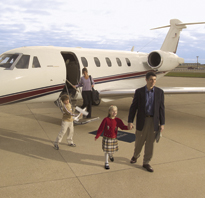 hat
information is the senior flight attendant given before flight?
hat
information is the senior flight attendant given before flight?

